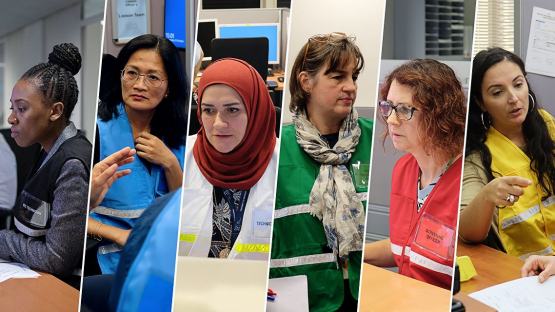They wear different coloured vests, have diverse backgrounds and are shaped by their unique experiences. One common goal unites them: to respond effectively to a nuclear or radiological incident or emergency. To mark the International Day of Women and Girls in Science, the IAEA commemorates the female emergency responders in its Incident and Emergency System (IES) and celebrates their contribution in this field.
“In emergency preparedness and response we need a broad range of disciplines,” highlighted Elena Buglova, Head of the Incident and Emergency Centre (IEC). “That’s why I encourage young women professionals to challenge themselves in new areas and take on increasingly difficult tasks to gain experience and grow in problem solving. This supports our emergency response and women’s professional advancement,” she added.
In an emergency response, the IES responders implement specific IAEA response roles: notify designated counterparts and exchange official information; assess potential emergency consequences and provide prognoses of the possible progression of the emergency; inform the public; provide assistance; and coordinate the inter-agency response. Women with diverse professional backgrounds are actively engaged in all these varied tasks.
Almost half of nearly 200 IES responders are women. Around a quarter of them are part of the technical team, whose tasks include assessing the causes, the response measures and the probable evolution of a nuclear or radiological emergency, as well as verifying technical information received during the emergency. Globally, according to UNESCO, women continue to be underrepresented in fields that contribute to these important tasks.
“I strongly believe that good preparation leads to a good outcome and that we need many highly qualified women to prepare for potential radiological emergencies,” said Debbie Gilley, a Radiation Safety Specialist in the IAEA’s IES.





